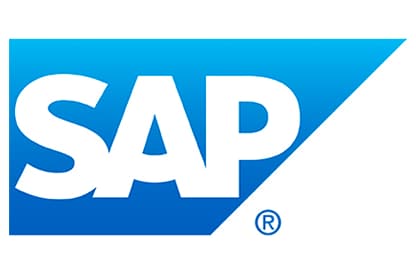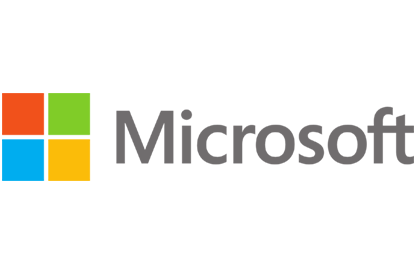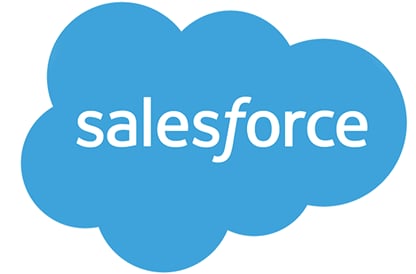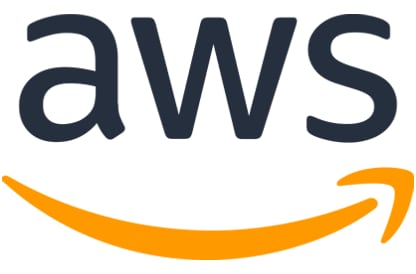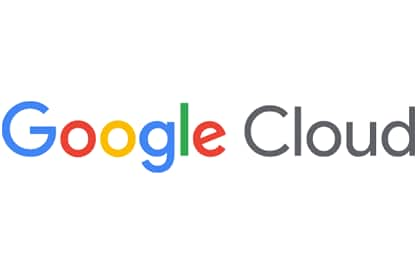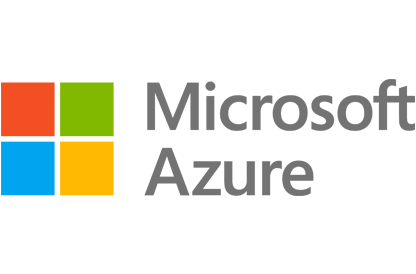Why OpenText
Why OpenText
Overview Why OpenText
OpenText brings decades of expertise to help you unlock data, connect people and processes, and fuel AI with trust
Manage and connect data
Unify data seamlessly across your enterprise to eliminate silos, improve collaboration, and reduce risks
AI-ready information
Get AI-ready and transform your data into structured, accessible, optimized information
Built-in security and compliance
Meet regulatory and compliance requirements and protect your information throughout its lifecycle
Empowering people
Overview Empowering people
OpenText helps people manage content, automate work, use AI, and collaborate to boost productivity
Customers
See how thousands of companies around the world are succeeding with innovative solutions from OpenText
Employees
Our people are our greatest asset; they are the life of the OpenText brand and values
Corporate Responsibility
Learn how we aspire to advance societal goals and accelerate positive change
Partners
Find a highly skilled OpenText partner with the right solution to enable digital transformation
How we compare
Content Management
Service Management
Deploy anywhere
Overview Deployment options
Explore scalable and flexible deployment options for global organizations of any size
Sovereign cloud
Local control. Global scale. Trusted AI
Private cloud
Your cloud, your control
On-premises
Free up resources, optimize performance and rapidly address issues
Public cloud
Run anywhere and scale globally in the public cloud of your choice
AI leadership
Overview Aviator AI
See information in new ways
OpenText™ Aviator AI
AI that understands your business, your data, and your goals
OpenText™ MyAviator
Say hello to faster decisions. Your secure personal AI assistant is ready to get to work
OpenText™ Business Network Aviator
Gain better insights with generative AI for supply chains
OpenText™ Content Aviator
Power work with AI content management and an intelligent AI content assistant
OpenText™ Cybersecurity Aviator
Improve your security posture with AI cybersecurity and agile threat detection
OpenText™ DevOps Aviator
Enable faster app delivery, development, and automated software testing
OpenText™ Experience Aviator
Elevate customer communications and experiences for customer success
OpenText™ Service Management Aviator
Empower users, service agents, and IT staff to find the answers they need
Aviator AI
Overview Aviator AI
See information in new ways
OpenText™ Aviator AI
AI that understands your business, your data, and your goals
OpenText™ MyAviator
Say hello to faster decisions. Your secure personal AI assistant is ready to get to work
OpenText™ Business Network Aviator
Gain better insights with generative AI for supply chains
OpenText™ Content Aviator
Power work with AI content management and an intelligent AI content assistant
OpenText™ Cybersecurity Aviator
Improve your security posture with AI cybersecurity and agile threat detection
OpenText™ DevOps Aviator
Enable faster app delivery, development, and automated software testing
OpenText™ Experience Aviator
Elevate customer communications and experiences for customer success
OpenText™ Service Management Aviator
Empower users, service agents, and IT staff to find the answers they need
Analytics
Overview Analytics
Predict, act, and win with real-time analytics on a smarter data platform
OpenText™ Aviator Search(AI)
Give users access to the answers they need, faster and easier, with multi-repository AI-based search that lets you contextualize everything from clicks to conversations
Business Network
Overview Business Network
Connect once, reach anything with a secure B2B integration platform
Content
Overview Content
Reimagine knowledge with AI-ready content management solutions
OpenText™ Content Aviator(AI)
Supercharge intelligent workspaces with AI to modernize work
Cybersecurity
Overview Cybersecurity
Integrated cybersecurity solutions for enterprise protection
OpenText Cybersecurity for SMBs & MSPs
Purpose built data protection and security solutions
OpenText™ Cybersecurity Aviator(AI)
Reinvent threat hunting to improve security posture with the power of agile AI
DevOps
Overview DevOps
Ship better software—faster—with AI-driven DevOps automation, testing, and quality
Experience
Overview Experience
Reimagine conversations with unforgettable customer experiences
Observability and Service Management
Overview Observability and Service Management
Get the clarity needed to cut the cost and complexity of IT operations
OpenText™ Service Management Aviator(AI)
Redefine Tier 1 business support functions with self-service capabilities from private generative AI
APIs
Overview APIs
Build custom applications using proven OpenText Information Management technology
OpenText™ API Services
Build it your way with OpenText Cloud APIs that create the real-time information flows that enable custom applications and workflows
Device and Data Protection
Overview Device and Data Protection
Protect what matters, recover when it counts
Unified Endpoint Management Tools
- OpenText™ Endpoint Management
- OpenText™ ZENworks Suite
- OpenText™ ZENworks Service Desk
- OpenText™ ZENworks Configuration Management
- OpenText™ ZENworks Endpoint Security Management
- OpenText™ ZENworks Full Disk Encryption
- OpenText™ ZENworks Endpoint Software Patch Management
- OpenText™ ZENworks Asset Management
Solutions
Trusted Data & AI
Overview Trusted Data & AI
Secure information management meets trusted AI
OpenText AI Data Platform
A unified data framework to elevate data and AI trust
OpenText Aviator Studio
A place where you can build, deploy, and iterate on agents in your data's language
OpenText Discovery
A set of tools to help ingest data and automate metadata tagging to fuel AI
OpenText Data Compliance
A suite of services and APIs that make governance proactive and persistent
OpenText Aviator AI Services
Professional services experts who help you on your AI journey
Information Reimagined
Overview Information Reimagined
Get greater visibility and sharper insights from AI-driven information management. Ready to see how?
Knowledge reimagined
Transform daily work with enterprise content management powered by AI
Service Management reimagined
Cut the cost and complexity of IT service management, AIOps, and observability
Connections reimagined
AI-powered B2B integration for supply chain success
Conversations reimagined
Drive value, growth, and loyalty with connected customer experiences
Engineering reimagined
Agile development and software delivery? It only seems impossible
Security reimagined
Cybersecurity for the Enterprise
Decisions reimagined
Unlock insights with AI data analytics
Artificial Intelligence
Overview Aviator AI
See information in new ways
OpenText™ Aviator AI
AI that understands your business, your data, and your goals
OpenText™ MyAviator
Say hello to faster decisions. Your secure personal AI assistant is ready to get to work
OpenText™ Business Network Aviator
Gain better insights with generative AI for supply chains
OpenText™ Content Aviator
Power work with AI content management and an intelligent AI content assistant
OpenText™ Cybersecurity Aviator
Improve your security posture with AI cybersecurity and agile threat detection
OpenText™ DevOps Aviator
Enable faster app delivery, development, and automated software testing
OpenText™ Experience Aviator
Elevate customer communications and experiences for customer success
OpenText™ Service Management Aviator
Empower users, service agents, and IT staff to find the answers they need
Industry
Overview Industry solutions
Improve efficiency, security, and customer satisfaction with OpenText
Energy and resources
Transform energy and resources operations with cloud, cybersecurity, and AI
Financial services
Boost customer experience, compliance, and efficiency with AI
Government
Reimagine your mission with government-secure information management
Healthcare and life sciences
Improve care delivery and patient engagement with AI-powered solutions
Legal
Modernize legal teams with automated, AI-powered legal tech solutions
Manufacturing
Modernize manufacturing operations and logistics to reduce costs and ensure compliance
Retail and consumer goods
Enhance consumer engagement with omnichannel retail solutions and AI
Enterprise Application
Overview Solutions for Enterprise Applications
Run processes faster and with less risk
Services
Services
Overview Services
Achieve digital transformation with guidance from certified experts
Professional Services
Modernize your information management with certified experts
Customer Success Services
Meet business goals with expert guidance, managed services, and more
Support Services
Turn support into your strategic advantage
Managed Services
Free up your internal teams with expert IT service management
Learning Services
Discover training options to help users of all skill levels effectively adopt and use OpenText products
Professional Services
Overview Professional Services
Modernize your information management with certified experts
Customer Success Services
Overview Customer Success Services
Meet business goals with expert guidance, managed services, and more
Support Services
Overview Support Services
Turn support into your strategic advantage
Managed Services
Overview Managed Services
Free up your internal teams with expert IT service management
Learning Services
Overview Learning Services
Discover training options to help users of all skill levels effectively adopt and use OpenText products
Partners
Find a Partner
Overview Find a partner
Information is the heartbeat of every organization. We build information management software so you can build the future
Cloud Partners
Overview Cloud Partners
OpenText partners with leading cloud infrastructure providers to offer the flexibility to run OpenText solutions anywhere
Enterprise Application Partners
Overview Enterprise Application Partners
OpenText partners with top enterprise app providers to unlock unstructured content for better business insights
Partner Solutions
Overview Partner Solutions
Discover flexible and innovative offerings designed to add value to OpenText solutions
Resources for Partners
Overview Resources for Partners
Discover the resources available to support and grow Partner capabilities
Support
Overview Customer Support
Get expert product and service support to accelerate issue resolution and keep business flows running efficiently
Resources
Overview Resources
Explore detailed services and consulting presentations, briefs, documentation and other resources
Choose your region:
Europe, Middle East and Africa
Asia–Pacific
What is Identity and Access Management?
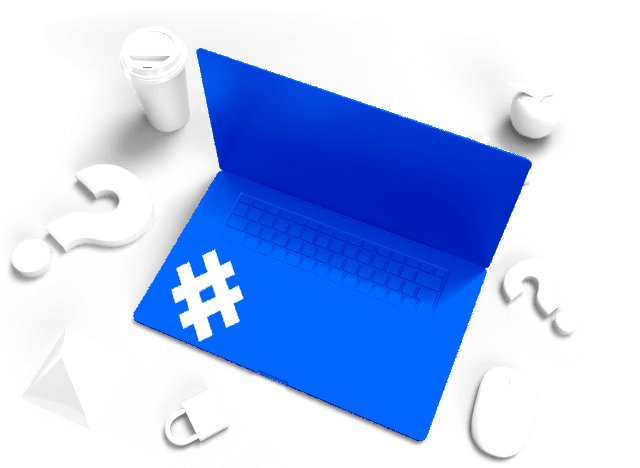
Overview
Identity and Access Management (IAM) is a system that allows organizations to manage digital identities of their employees, customers, and other stakeholders. It helps ensure that only authorized individuals have access to the resources and systems they need to perform their job duties or access certain services.
Gartner defines IAM as the “discipline that enables the right individuals to access the right resources at the right times for the right reasons.”
IAM systems are an essential component of an organization's security and compliance strategy, as they help protect sensitive information and systems from unauthorized access. They can also help organizations streamline their operations, improve efficiency, meet various regulatory requirements and more.
Overall, IAM is a vital tool for organizations to secure their assets and ensure that only authorized individuals can access the resources and systems they need.
Unlocking the power of secure Identity and Access Management
Identity and Access Management
What are the benefits of Identity and Access Management?
In addition to reducing the risk of unauthorized access and managing digital identities, IAM systems can also bring numerous benefits to your organization, including:
- Improved security: IAM systems help reduce the risk of unauthorized access to sensitive data and systems by implementing strong authentication methods and role-based access controls.
- Increased efficiency: IAM systems can automate many of the tasks related to employee identity management, password self-service, meet compliance requirements, automate reporting, and detect threats which can save time and reduce the workload for IT staff.
- Greater agility: With an IAM system in place, organizations can more easily add and remove users, as well as adjust their access permissions, which can help them respond more quickly to changing business needs.
- Improved user experience: By simplifying access to all necessary systems and resources through a single set of credentials, making it easier for users to complete their tasks.
- Better data protection: IAM systems can help organizations protect personal and financial data by implementing strong access controls and ensuring that only authorized users have access to sensitive information.
How does IAM improve regulatory compliance?
Identity and Access Management (IAM) enables enhanced compliance. Many regulations and industry standards, such as General Data Protection Regulation (GDPR) and the Health Insurance Portability and Accountability Act (HIPPA), require organizations to implement robust IAM systems. By implementing IAM, organizations can more easily meet these requirements.
How does Identity and Access Management work?
The Identity and Access Management (IAM) framework will include a variety of policies, procedures, and technologies that are unique to an organization to help manage identities and access services.
This can include the lifecycle of an employee. For example, when a new employee is added to a system, a new digital identity will be created and the automated system will request information such as their name, contact information, job role and more. As the relationship begins with the employee and organization, so does IAM’s Full Identity Lifecycle Management process:
- Relationship begins (provisioning): Once an employee's identity has been authenticated, the IAM system will determine what resources and systems the employee is authorized to access based on their job duties and responsibilities. The system will then grant the employee the appropriate access permissions.
- New username and password (authentication): When an employee attempts to access a system or resource, the IAM system will verify their identity. This is typically done through a login process that involves the employee entering their credentials, such as a username and password. Strong authentication methods, such as multi-factor authentication (MFA), may be used to provide an additional layer of security.
- Access management (authorization & permissions): The IAM system will continuously monitor the employees’ access to ensure that they only have access to the resources and systems they need to perform their job duties. If the employee's role or responsibilities change, the IAM system will update their access permissions accordingly.
- Relationship ends (deprovisioning): When an employee leaves the organization or no longer requires access to certain resources, the IAM system will revoke their access permissions and disable their digital identity.
By implementing an IAM system and following established policies, organizations can reduce the risk of human error and streamline their operations to improve efficiency. IAM systems can automate tasks such as employee onboarding and offboarding, which can help reduce the workload for IT staff. By leveraging the many capabilities of IAM systems, organizations can better manage their digital identities and access to resources, resulting in improved efficiency and reduced risk.
How does IAM apply to workforce and customer identities?
Workforce identity
Using IAM to manage workforce identities enables an efficient, work‐from‐anywhere workforce. You can control your level of trust through continuous risk evaluation across the whole user session, start to finish.
Customer identity
Customer (or consumer/citizen) identity and access management (CIAM) focuses on managing and controlling external (customer) parties' access to a business’s applications and digital services. CIAM enables a secure, seamless user experience. It’s recommended to use a platform that offers purpose‐based controls for customers engaging with your services and resources.
How does IAM help achieve zero trust?
Zero trust and IAM go hand in hand when it comes to protecting your organization's systems and data from potential threats. What is zero trust? Zero trust is a security model that assumes that all users and devices are untrusted until proven otherwise, and IAM is the system that helps you securely manage these digital identities. By including IAM in your zero-trust strategy you are protecting your organization from potential threats and enhancing your overall security posture.
Identity and Access Management (IAM) is the foundation for achieving a zero-trust security model. NetIQ’s purpose is to help organizations protect sensitive information by automating privileges and access controls to ensure appropriate access to applications, data, and resources. In other words, we assist our customers in implementing IAM systems that help them achieve zero trust.
What are the key components of Identity and Access Management?
A comprehensive IAM platform can provide secure access, effective governance, scalable automation, actionable analysis, and insight across all your Cloud, Mobile, & Data platforms. Core capabilities include:
ADAPTIVE ACCESS
- User Authorization
- Access Control
- Access Management
- Single Sign-On
- Federation
- Risk Based Authentication
- API Management
- API Security
- Privileged Access
- Bastion Server
- Credential Management
- Multi-factor Authentication
- Secure Remote Access
- Biometrics
GOVERNANCE
- Access Governance
- Role Based Access Control
- Attribute Based Access Control
- Least Privileged Access
- Data Access Governance
- Risk Mitigation
- Data Breach Prevention
- Policy Management
AUTOMATION
- User Provisioning
- Identity Management
- Identity Lifecycle Management
- Automated Provisioning
ANALYSIS & INSIGHTS
- Unsupervised Machine Learning
- Identity Analytics
- Business Impact Analysis
- Behavioral Analytics
- Business Impact
- Compliance insight
What is the NetIQ IAM platform?
NetIQ's Identity and Access Management (IAM) platform offers a comprehensive set of IAM services for both employee and customer identities. With its wide range of identity and access services, NetIQ's IAM platform can help organizations manage all their digital identities, ensuring that only authorized individuals have access to the resources and systems they need.
NetIQ’s IAM platform includes: Identity Governance and Administration, Access Management, Privileged Access Management, and Policy Orchestration. Together these components provide a comprehensive IAM platform that offers secure access and governance across all platforms.
Identity Governance and Administration (IGA)
Identity Governance and Administration makes it possible for customers to manage identity and access holistically, obtaining the insights they need to manage data security and business operations, glean insight into how resources are being used, and provide information to the business to help make informed decisions that impact security, compliance, and IT and business governance.
- Identity Manager is a complete solution to control who has access to what across your customers’ enterprise—both inside the firewall and into the cloud. It enables customers to provide secure and convenient access to critical information for business users while meeting compliance demands.
- Identity Governance is a comprehensive identity governance solution that provides a business-friendly interface built on a common governance model that spans all your customers’ business processes relating to identity, access, and certification.
- Data Access Governance (DAG) - Gain data insight through reports and analysis of Microsoft network and 356-stored data into your unstructured data and repositories. Then put policies in place to protect it from unauthorized access.
Access Management
NetIQ’s Access Manager delivers user single sign-on and secure access to intranet and cloud-based applications from wherever the user is located: the office, remote, on the road; or for consumers, from whatever device they are using.
- Access Manager enables organizations to integrate modern as well as legacy web-based applications. In addition to providing multiple federation options, it also allows single sign-on access for applications through its GUI without the need to modify applications or write complex code.
- Advanced Authentication allows you to centralize your authentication into a single framework where you can manage them with a single policy console, decreasing costs and increasing security.
Privileged Access Management (PAM)
NetIQ’s Privileged Access Management system centralizes management of elevated credentials using flexible, policy-based methods that enforce least privilege access and enforces consistent privileged access policies and controls.
- Privileged Account Manager is a centralized and secure solution that can be easily integrated into your organization's IT environment. Manage and track all your privileged accounts across your entire IT landscape, including on-premises, cloud, and hybrid environments.
Policy Orchestration
NetIQ’s Policy Orchestration is the process of deploying security policies across all data islands such as cloud-based Linux, SaaS applications, Azure AD, data centers, Office 365, mobile devices, etc.
- Universal Policy Administrator enables IT Admins to build and deploy security and configuration policies and controls from a single console using a modern, cloud-based solution. UPA’s least-privilege delegation for policy administration for Windows, Mac, Linux, regardless of the device location, such as on premise or within the top cloud providers (Azure, Google AWS, etc.) UPA’s comprehensive and consolidated auditing will provide compliance teams and auditors with proof through process and reports.
- AD Bridge extends common and well-known management processes from Active Directory to non-Windows resources like Linux and UNIX. Create security and configuration policy to manage on premise and in the cloud. It helps in breaking the policy silos between windows and Linux administration and provides the multilevel approval process for any policy change.
- Change Guardian provides ability to monitor access to critical files and data, identifies changes in key file systems through file integrity monitoring, delivers comprehensive change reporting to demonstrate compliance to auditors.
Directory Resource Administrator closes the native admin gaps for Active Directory, Azure AD, Exchange, and Office 365 with a delegated permission model and extends capabilities to Line of Business administrators. DRA enforces directory policies on-premises or in the cloud and offers detailed reporting of resources across heterogenous environments.
Related products
Identity and access management
Secure your digital assets by confidently managing identities and access
OpenText™ Data Access Goverance
Secure unstructured data and prevent unauthorized access
OpenText™ Access Manager with Managed Services
Enable single sign-on and access control across platforms
